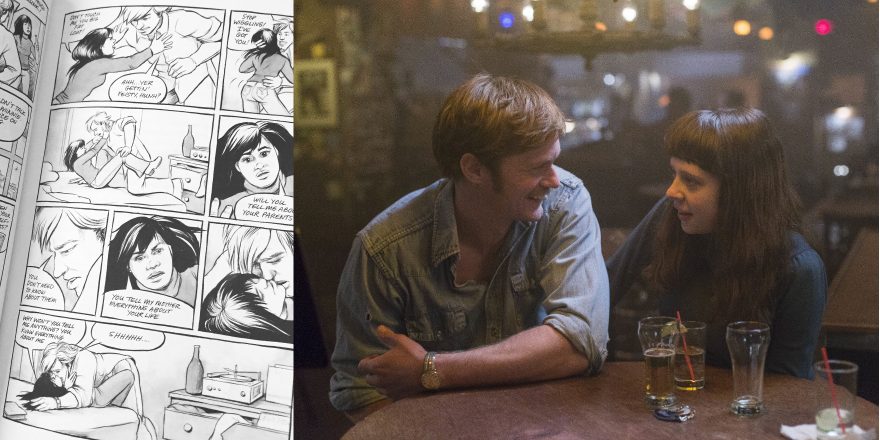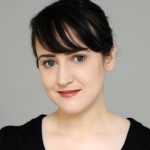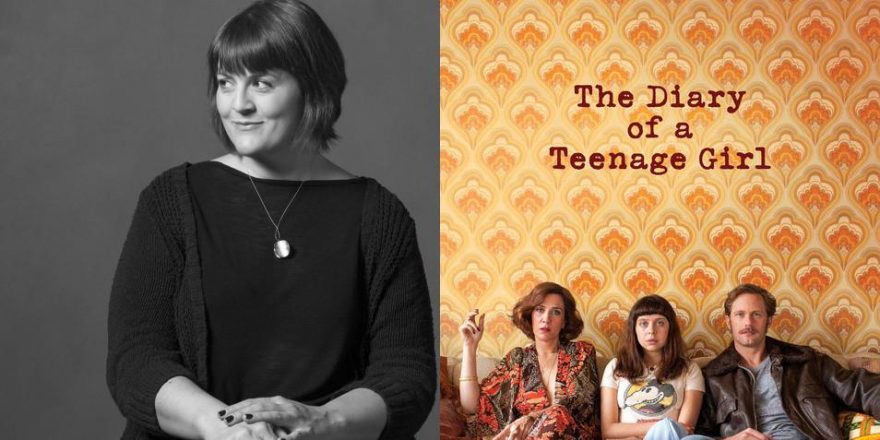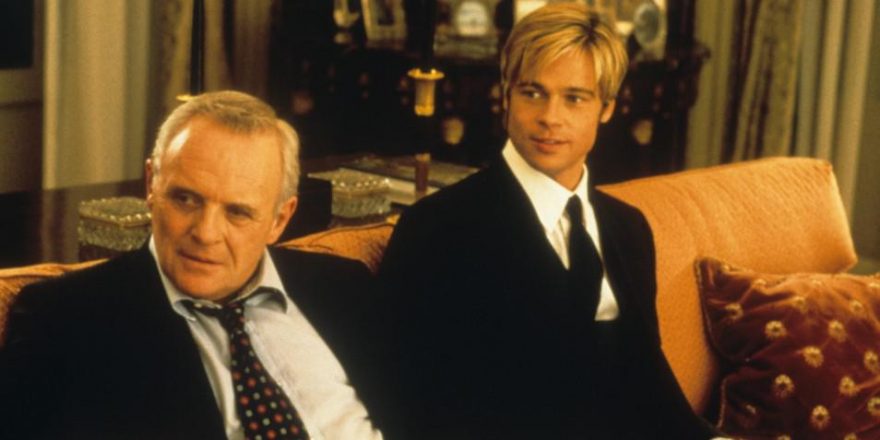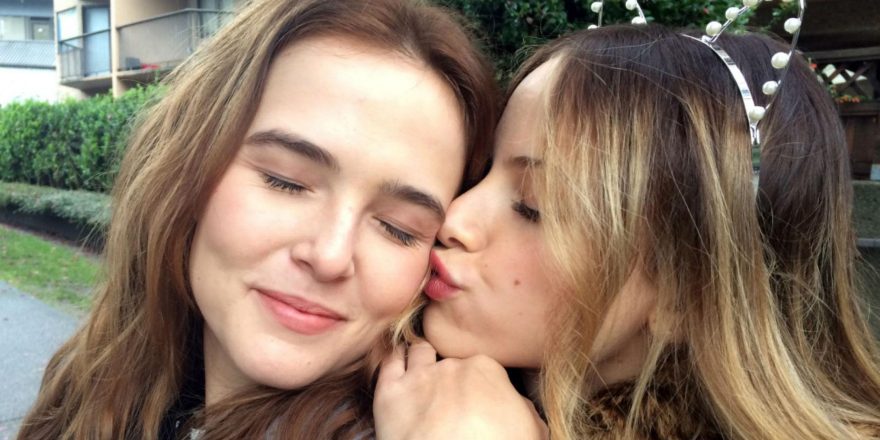“I had hoped that when summer began I would be able to think a little more coherently about my relationships with Tim and Jonas – or lack thereof – and all that crap that comes with (as far as I know) unrequited infatuation. Instead, I was released into the big bad world which has a larger number of straight guys and I have practically been throwing myself at every one of them since. ‘Oh brave new world that has such people in it!’ as Miranda from The Tempest would say.”
– My journal, age 16
There was a time when I was young and naïve. I didn’t feel that way – I felt old, cynical, and jaded. I’d felt that way since I was about eight. But of course, feeling something and being something are two different things.
I found my sort-of friend Rana sitting in our boarding school’s dorm staircase with a copy of a book, The Diary of a Teenage Girl. It was the last few days of my junior year of high school, and as we signed each other’s yearbooks, I picked it up. The book fell open to a full-page illustration. A grown man, completely nude, was shown from behind, yelling at an also nude teenage girl. She was facing a window, looking at him over her shoulder, and flipping him off. Both were drawn in a very realistic, detailed way, but with a clear comic influence, and the kind of exaggeration that comes with memory.
The drawing left me feeling both horrified and curious, so I leafed through the first few pages of the book. A girl my age, or maybe even younger, wrote in detail of losing her virginity to a man old enough to be her father. He was “the handsomest man in the world,” she wrote. He was also her mother’s boyfriend.
I was 16 and afraid of sex. I was afraid of a lot of things, but the idea of having sex was especially terrifying. There was so much at risk. That people called it “losing your virginity” seemed objectionable in itself: who wanted to lose something? I no longer believed I would wait “until I was married,” and I didn’t feel guilty for any sexual feelings I might have had, but I kept sex at a distance. What scared me most was how people used it to hurt each other. Who was the girl writing this diary? And how could she do that to her own mother?
This book was not for me. I quickly gave it back to Rana. But I never forgot it.
“I’ve realized lately that I don’t really like having a boyfriend because I don’t like having to be someone’s cute, funny girlfriend all the time. And it’s not like the boyfriends I’ve had have forced this upon me — I do it myself. I hate it, but I just don’t know what else to do. Just “be myself?” That’s bullshit. It’s too fucking hard to be myself — and sometimes I don’t even know who the hell I am! It’s like my personality is dependent on who I’m with or the situation I’m in. All I know is that every time I’ve tried to show a little bit of who I honestly believe I am, I’ve gotten fucked over.”
– My journal, age 18
I found a copy of the book at my old theater school building when I was 25. I’d give it another chance, I thought. I knew it was something of a roman a clef, set in the 1970s, and I had a soft spot for coming-of-age stories told against a backdrop of social or political upheaval. Though as someone born in the late 1980s, the ‘70s didn’t seem so much a time of social or political upheaval but a sort of hangover after the ‘60s.
It’s 1976 in San Francisco and Minnie Goetze wants to be an artist. Her father is an artist who “likes to party” and has effectively abandoned her, and her mother is the kind of person to walk down the street with a drink, get bored of it halfway through, and dump the rest in a mailbox. She routinely offers Minnie pot, but hasn’t hugged her in years. The only person who seems to care about her is her ex-stepfather Pascal, though his feelings seem at best insincere and often sinister.
Then there’s Monroe. Monroe, the older man. Her mother’s sometime-boyfriend, handsome and laid-back, likely an alcoholic, casually racist, a self-described “dirty old man.” Minnie knows he’s taking advantage of her, but he gives her the sex she craves and the affection she’s lacking. It struck me while reading it that the first time, I hadn’t thought at all about him. I hadn’t been thinking about what he had done. I had judged the girl.
When I was finished, I once again felt horrified, but for a different reason. This girl had no one. There wasn’t a single person Minnie looked up to that didn’t try to take advantage of her. Her prose was poetic, but her descriptions of the affair were starkly detailed, matter-of-fact. Only in the art – both in Minnie’s doodles and comics and the separate, distinct, detailed illustrations done by the author Phoebe Gloeckner – did I see any of her vulnerability. Minnie wrote over and over that she wasn’t afraid of anything, and she didn’t seem so – she seemed strong, cynical, jaded. Or at least that’s what she wanted to believe. Along with her mother and Monroe, Minnie often only sees what she wants to see.
I didn’t know if I enjoyed reading The Diary of a Teenage Girl. But I kept going back to it. I must have re-read it five times in one year. Minnie stayed with me.
“I had sex today. Holy shit.”
–Minnie Goetze, age 15, in the film The Diary of a Teenage Girl
It’s widely accepted that very few films “improve” upon a book. One can try to be “faithful” to the book, or try to “reimagine” the book, and hope for the best. My favorite adaptations, however, are the ones that work with the book, as an extension of it, showing what you did not see the first time.I still wasn’t sure whether or not I liked The Diary of a Teenage Girl when I heard it was going to be adapted into a film. But I knew I had to see it. I felt the same magnetic effect just watching the trailer, and asked my sister if she wanted to see it with me. A sensitive visual artist who lives in San Francisco, she had never read the book, and she has never been cynical or jaded. Her adolescence was even more innocent than mine. But something about it pulled her in, too. Maybe it was the poster, with Bel Powley as Minnie, sat between her mother and Monroe. Maybe it was the story of a girl finding herself through art. There was something in it for her, too.
Marielle Heller’s adaptation is, in and of itself, a great film. The casting is perfect: Kristen Wiig, as Minnie’s mother, is self-absorbed and oblivious, but with a vulnerability that makes you want to forgive her for all her neglect. Alexander Skarsgård, so different from the drawings of the barrel-chested Monroe, but so perfectly him. He is handsome, and charming, with the sexuality of a man but the emotional intelligence of a boy. His Monroe is manipulative, needy, impulsive, but not a monster. At the center is Bel Powley as Minnie, solitary, tough, expressive, sensual, cute and, above all, young.
Minnie daydreams in art, taking walks with her hero, Aline Kominsky, imagines phalluses popping out of pants, and having birds’ wings. At times it feels like a natural extension of the San Francisco ’70s comics scene Minnie loves so well. But while Heller includes drawing and animation, she also uses the camera the way Gloeckner uses her illustrations. In the scene I had first seen in the book, Minnie stands up to Monroe, threatening to tell her mother, and he yells at her, accusing her of manipulating him. In the book, at 16, all I could see was her flipping him off. In the film, at 28, I saw her tears.
It’s a funny trick of writing that the more detailed and specific a narrative is, the more universal it is. Seeing the film, I felt like it had been made for me. Unlike Minnie, I spent my teenage years shying away from sex, drugs and rock & roll (I was much more into “taking long baths,” Zoloft and musical theater), but all the feelings were there. Maybe I didn’t want to think I was like Minnie, but I was. I wanted to believe I was strong. Watching Minnie tell her diary that she knows Monroe is only attracted to her “youthfulness,” I thought of the many pages in my diary dedicated the older men I’d known when I was 17, 23, 25. Nobody can hurt you like an older man who doesn’t mean to hurt you.
Bel Powley as Minnie closes the movie with a direct quote from the book: “For all the girls, when they have grown.“
At this, I blinked back tears and turned to my younger sister.
“Did you like it?”
“Yeah!” she said. “I really liked it. Did you?”
“I loved it.” I finally understood.
A few months later, at a reading for my book, an audience member asked me if I had any movie recommendations.
“My favorite movie I saw this year was The Diary of a Teenage Girl,” I said. They came up after, and said they had looked it up, but found the synopsis a little disturbing, so figured they’d skip it.
And maybe they did. But maybe they’re just not ready for it yet.


